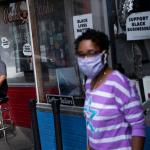Attack America’s Overlapping Miseries: Why Going Big on Relief Is an Economic, Public Health and Moral Imperative

A strange split vision is at play as the new Biden-Harris administration and its congressional supporters and opponents wrangle over proposals for economic relief and a stimulus bill for a U.S. economy devastated by the COVID-19 pandemic. Politicians and economists are arguing over the amount of relief and who should be eligible. Meanwhile, medical and public health professionals are scrambling for the fiscal, material and technical resources and personnel urgently needed for COVID-19 treatment, testing, contact tracing, vaccines and vaccine distribution, and also to track cases, hospitalizations, deaths and vaccinations.
But for the people and communities afflicted, the miseries of COVID-19 and its economic determinants and impacts are concurrent, not split. People and communities don’t experience fears, suffering and loss one day in relation to COVID-19, and on another day in relation to their economic circumstances. Instead, they are commingled and collectively take a toll on community well-being. Any relief bill that actually provides relief must address these jointly lived realities — especially in a context in which U.S. billionaires have increased their net worth by more than $1 trillion during the pandemic.
In just a year, COVID-19 has reached every corner of the U.S., and has infected nearly 28 million people in the U.S. and killed more than 480,000. Yet a clear picture of the concurrent plagues of COVID-19 and economic insecurities is hard to come by. One reason is that publicly reported health agency COVID-19 data rarely if ever include any socioeconomic information. Another is that public health national, state and local reports on COVID-19 rates in relation to community characteristics overwhelmingly rely on U.S. Census data collected in years prior to the pandemic, and thus do not capture the pandemic economic shocks.
To bring into focus the split vision that looks at COVID-19 with one eye and economic misery with another, we have looked jointly at the toll of COVID-19 deaths and real-time representative data on food insecurity and housing insecurity, from the real-time U.S. Census Household Pulse Survey. The picture is stark.
For both U.S. states and the 15 largest metropolitan statistical areas, the overlap of misery is clear. Higher cumulative COVID-19 death rates in the third wave of the pandemic (from Oct. 1, 2020, to Jan. 10, 2021) co-exist with higher food insecurity among households with children under age 18 and higher rates of renters being unable to pay their last month’s rent (for Oct. 28, 2020, to Jan. 18, 2021). For example, during these time periods, Vermont’s COVID-19 death rate equaled 157 per million, food insecurity affected 12.8% of households with children under 18, and 15.9% of renters were behind in their rent. For Arkansas, with a death rate of 888 per million, such food and housing insecurity affected 20.2% and 19.4% of its population, respectively.
Moreover, the extent of these hardships varies by education, by racialized group, by place — and by all three together. Consider the case of food insecurity, referring to the percent of household with children under age 18 who sometimes or often have not had enough food to eat in the past seven days. Since October 2020, among persons with at least a bachelor’s degree, averaging across U.S. states, such food insecurity has affected fully 25% to 30% of Black non-Hispanic and Hispanic persons, versus 16% of white non-Hispanic and Asian non-Hispanic persons. By contrast, among persons with at least a bachelor’s degree, it has affected under 5% of white non-Hispanic and Asian non-Hispanic persons, and 8% of Hispanic and 12% of Black non-Hispanic persons.
Across the 15 largest metropolitan statistical areas, the highest occurrence of this food insecurity — upwards of 40% — occurred among Black non-Hispanic and Hispanic persons with less than a college degree living in the greater Boston area, whereas the lowest prevalence — only 1% — occurred among white non-Hispanic and Asian non-Hispanic persons in the Seattle area.
Similar patterns occurred for housing insecurity, albeit with an even greater advantage for white non-Hispanic persons with at least a bachelor’s degree, with this problem affecting only 2% of such people in the Atlanta area, versus 40% to 45% of Hispanic and Black non-Hispanics people with less than a college degree in, respectively, Greater Philadelphia and the Chicago area.
Government of, by, and for the people, especially “to promote the general welfare,” is government that ensures the conditions for all people to thrive. Healing the dual miseries of COVID-19 and economic insecurity requires relief sufficient to ensure that all individuals, their families and their loved ones can live through this pandemic. The time to go big is now.
[Nancy Krieger is a professor, Christian Testa is a statistical analyst, Pamela D. Waterman is a project director, and Jarvis T. Chen is a lecturer at the Harvard T.H. Chan School of Public Health.]
